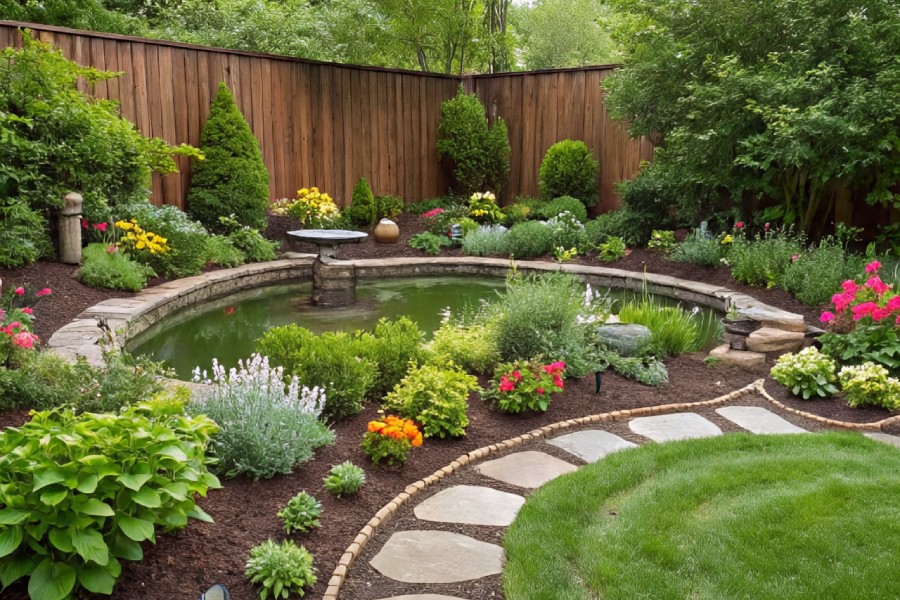 Landscaping isn’t just about curb appeal anymore—it’s about stewardship. As water becomes scarcer and ecosystems become more fragile, many homeowners are turning to sustainable landscaping practices to create outdoor spaces that are both beautiful and environmentally responsible.
Landscaping isn’t just about curb appeal anymore—it’s about stewardship. As water becomes scarcer and ecosystems become more fragile, many homeowners are turning to sustainable landscaping practices to create outdoor spaces that are both beautiful and environmentally responsible.
In this guide, we’ll break down what sustainable landscaping really means, why it matters, and how you can implement practical, eco-friendly strategies in your own yard—regardless of size or budget.
What Is Sustainable Landscaping?
Sustainable landscaping is a method of designing, installing, and maintaining outdoor spaces in a way that reduces environmental impact and preserves natural resources. It focuses on working with nature—not against it—by minimizing water use, reducing chemicals, increasing biodiversity, and improving soil health.
Benefits of Sustainable Landscaping
- ✅ Reduces water usage and utility bills
- ✅ Requires less maintenance over time
- ✅ Improves soil and plant health naturally
- ✅ Supports native wildlife and pollinators
- ✅ Creates resilient, climate-adaptive landscapes
1. Choose Native and Drought-Tolerant Plants
Native plants have adapted to your region’s climate and soil. They need less water, fewer fertilizers, and are naturally more resistant to pests and diseases. Look for native grasses, wildflowers, shrubs, and trees that thrive in your zone.
Tip:
Use a local extension office or native plant database to find appropriate species for your area.
2. Reduce or Eliminate Turf Grass
Traditional lawns require frequent mowing, irrigation, and fertilization. By reducing lawn areas or replacing grass with ground cover, mulch, or stone, you conserve water and lower emissions from lawn equipment.
Alternatives include:
- Clover
- Creeping thyme
- Buffalo grass
- Artificial turf (in low-use areas)
3. Use Mulch for Moisture and Weed Control
Organic mulch like bark chips, shredded leaves, or compost helps retain soil moisture, prevent weed growth, and slowly enrich your soil as it decomposes.
Avoid dyed or rubber mulch, which can leach chemicals and disrupt soil organisms.
4. Install Drip Irrigation or Soaker Hoses
Overhead sprinklers often waste water due to evaporation or runoff. A drip system delivers water directly to plant roots, where it’s needed most—reducing waste by up to 60%.
Pair with a timer to avoid overwatering and ensure consistency.
5. Harvest Rainwater
Rain barrels, cisterns, and bioswales are excellent ways to collect and reuse rainwater for irrigation. Redirect roof runoff into storage systems or areas where water can soak naturally into the ground.
6. Practice Composting
Instead of tossing kitchen scraps or yard waste, compost them to create rich organic matter for your garden beds. Compost improves soil structure, promotes healthy microbes, and reduces landfill waste.
7. Avoid Chemical Fertilizers and Pesticides
Chemical-based lawn care may produce short-term results, but they harm beneficial insects, leach into groundwater, and can damage long-term soil health. Opt for:
- Organic compost
- Natural pest deterrents like neem oil or diatomaceous earth
- Integrated pest management (IPM) strategies
8. Design with Permeable Surfaces
Traditional driveways and patios can create runoff problems. Using permeable materials like gravel, spaced pavers, or permeable concrete allows water to soak into the soil and replenish groundwater.
9. Encourage Pollinators
Bees, butterflies, and birds are essential to plant reproduction. Include flowering plants that bloom in succession throughout the seasons to provide ongoing food sources.
Try:
- Milkweed (for monarchs)
- Lavender and salvia (for bees)
- Sunflowers and coneflowers (for birds)
10. Group Plants by Water Needs
Known as hydrozoning, this practice involves grouping plants with similar water requirements together. It simplifies irrigation and avoids overwatering or underwatering specific plants.
11. Build Healthy Soil
Healthy soil is full of life—worms, fungi, and beneficial bacteria. Avoid over-tilling, add compost, and plant cover crops to enhance soil structure and fertility.
12. Reuse and Repurpose Materials
Sustainable landscaping often means working with what you have. Reuse bricks, stones, or lumber for edging, raised beds, or seating. Upcycled materials reduce waste and add character.
13. Plant Trees Strategically
Well-placed trees offer shade in summer, lower energy costs, and help manage stormwater. They also capture carbon and provide habitat for birds and insects.
How Sustainable Landscaping Supports Climate Resilience
In a changing climate, sustainable landscapes can help buffer the effects of extreme weather. Deep-rooted plants stabilize soil, diverse ecosystems recover faster from drought or pests, and less water dependence eases strain on local supplies.
Final Thoughts
Sustainable landscaping is more than a trend—it’s a smart, long-term investment in your property, your community, and the environment.
Even small steps like switching to native plants or mulching beds can make a meaningful difference. Over time, these eco-friendly choices create a low-maintenance yard that saves money and supports the planet.
📞 Contact us today to schedule a consultation or learn how we can help design a sustainable, water-wise landscape for your home.
Your yard can be beautiful, practical, and earth-friendly—all at once.
